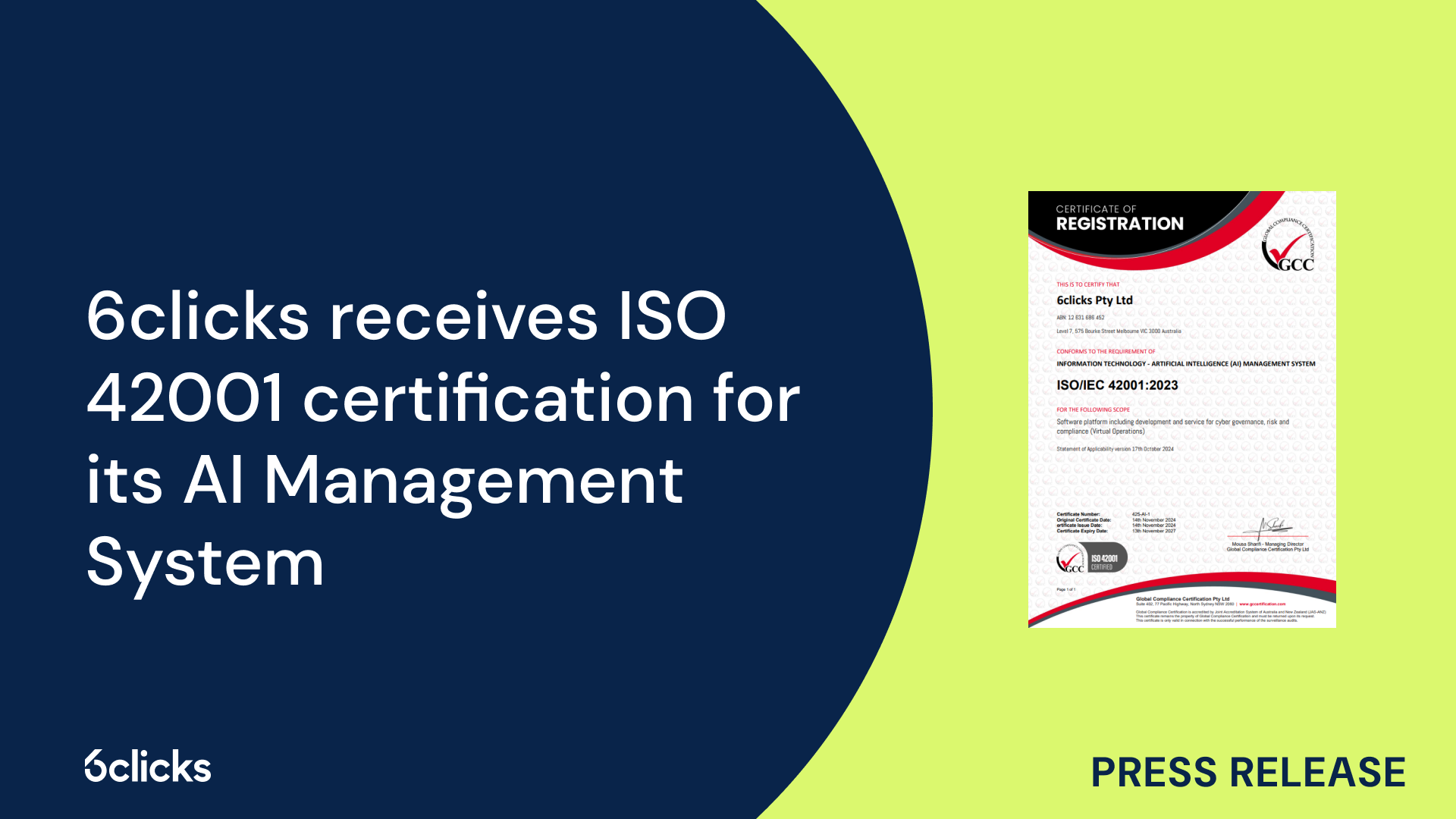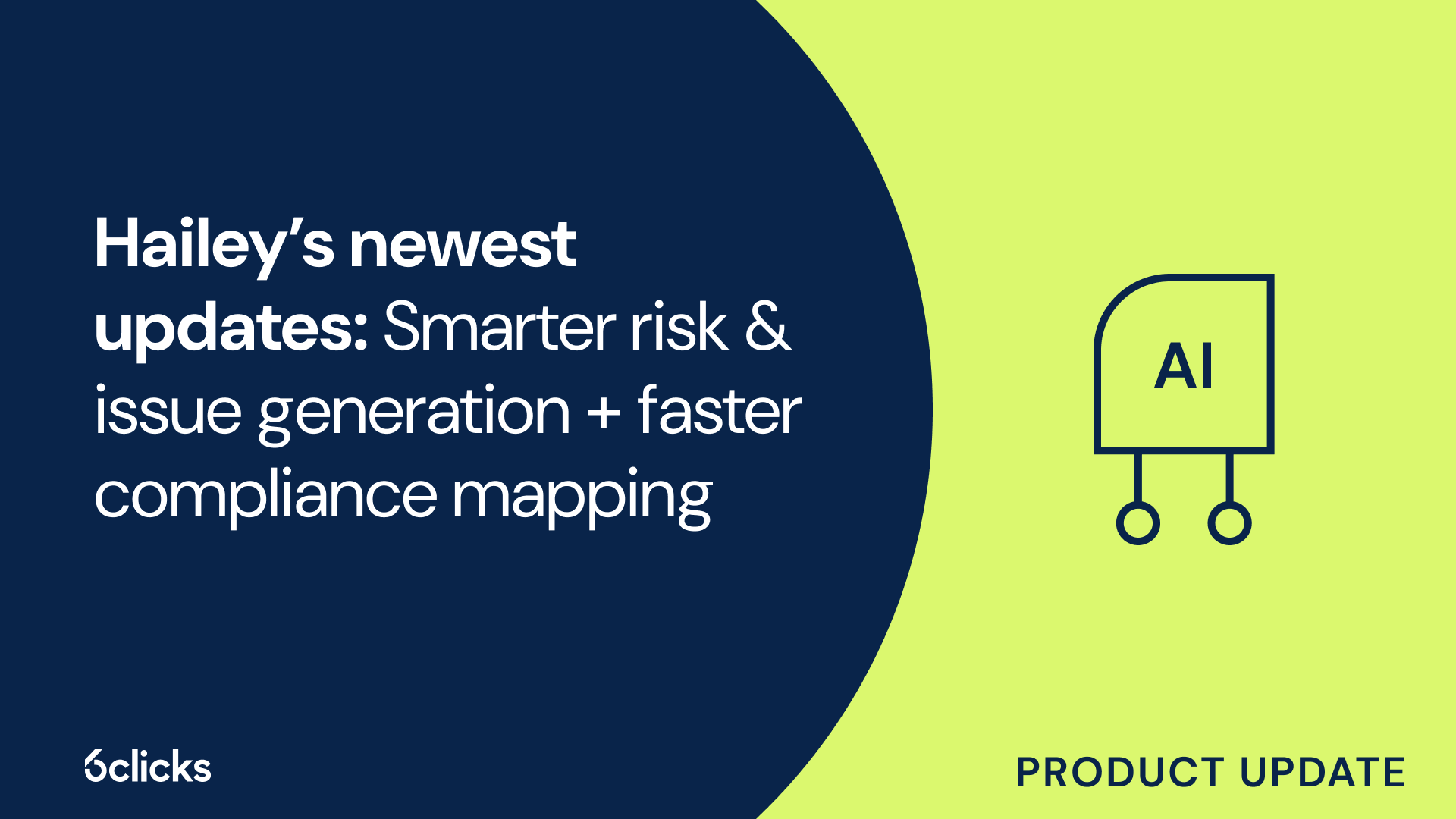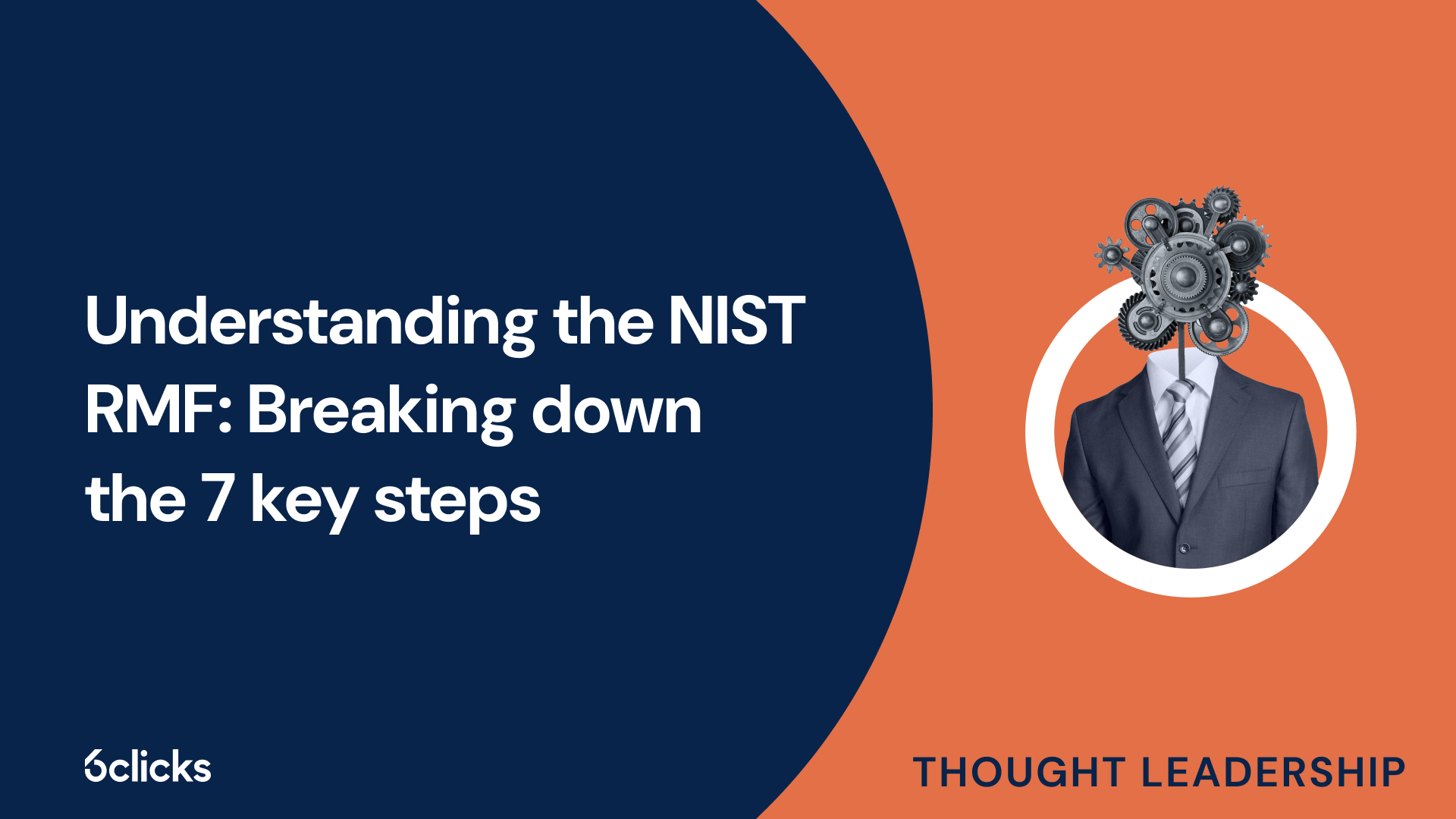What are the three pillars of ISO 27001?
Definition of ISO 27001
ISO 27001 is an international standard that sets out the criteria for implementing and maintaining an information security management system (ISMS). An ISMS is a systematic approach to managing sensitive company information to ensure its confidentiality, integrity, and availability. It includes various processes and controls to address the risks and threats faced by organizations in today's digital landscape. The three pillars of ISO 27001 are risk assessment, risk management, and control selection. These pillars guide organizations in identifying and evaluating potential risks, implementing measures to mitigate those risks, and selecting and implementing appropriate controls to ensure the security of their information. This framework provides a comprehensive approach to managing information security and helps organizations demonstrate their commitment to security to stakeholders. By implementing ISO 27001, organizations can establish a robust information security management system that protects their assets and helps them stay resilient against cyber threats.
Overview of the three pillars
The three pillars of ISO 27001 provide a comprehensive framework for organizations to establish and maintain effective information security practices. These pillars, namely confidentiality, integrity, and availability, are crucial in safeguarding sensitive information from unauthorized access, ensuring data accuracy and reliability, and ensuring that critical systems and services are accessible when needed.
Confidentiality focuses on protecting information from disclosure to unauthorized individuals or entities. By implementing security measures such as access controls, encryption, and secure storage, organizations can ensure that only authorized personnel can access sensitive data, reducing the risk of data breaches and information leaks.
Integrity refers to maintaining the accuracy, completeness, and trustworthiness of information. Organizations achieve data integrity by implementing measures such as data validation, version control, and data backup procedures. By ensuring the integrity of information assets, organizations can prevent data manipulation, unauthorized modifications, and the introduction of errors or inconsistencies.
Availability is the third pillar and focuses on ensuring that systems and services are available and accessible for authorized users when needed. This includes implementing measures like redundancy, disaster recovery planning, and business continuity management. By addressing potential risks and vulnerabilities, organizations can minimize disruption to their operations and maintain service availability in the face of unexpected events or cyber threats.
To achieve these three pillars, organizations must focus on people, processes, and technology. This entails having well-defined security policies and procedures, conducting regular risk assessments and security audits, implementing security controls and measures, and providing appropriate training and awareness programs to employees. By taking a systematic approach to information security management and addressing all key aspects, organizations can achieve an ISO 27001-compliant information security management system that effectively protects their critical assets.
Pillar 1: establishing a security policy framework
As organizations strive to protect their information assets from cyber threats and security breaches, establishing a comprehensive security policy framework is essential. This pillar of ISO 27001 emphasizes the importance of having a structured approach to defining and implementing security policies that align with the organization's objectives and legal and regulatory requirements. The security policy framework serves as a foundation for the organization's information security management system (ISMS) and guides the development of security controls and measures to mitigate risks. It outlines the organization's commitment to security and provides a framework for the implementation of security tasks and responsibilities. This pillar also emphasizes the need for senior management's involvement and commitment to ensure the effectiveness of the security policy framework. By establishing a strong security policy framework, organizations can set clear expectations for employees, contractors, and other stakeholders regarding information security and ensure a robust and systematic approach to managing security risks.
Defining security policies and procedures
Defining security policies and procedures is an integral part of establishing an ISO 27001-compliant Information Security Management System (ISMS). These policies and procedures contribute to upholding the three pillars of information security, namely confidentiality, integrity, and availability.
Security policies provide a framework for decision-making and guide organizations in addressing potential risks and threats. They outline the overall approach to information security and set the tone for the organization's commitment to security. These policies establish the baseline for security requirements and help define the acceptable levels of risk.
On the other hand, security procedures outline the detailed steps and actions required to implement the security policies effectively. They provide guidance on specific security tasks, such as access control, incident response, and risk management processes. These procedures ensure that security measures are consistently implemented and followed across the organization.
Both security policies and procedures play a crucial role in the risk assessment process. They help identify and assess potential security risks, which enables organizations to develop a robust risk treatment plan. By defining security policies and procedures, organizations can implement a systematic approach to manage and mitigate these risks.
Developing a risk management system
Developing a risk management system involves a series of crucial steps that help organizations protect their sensitive data and mitigate potential risks. The first step is to identify the critical touchpoints within the system where sensitive data is stored, accessed, processed, and analyzed. These touchpoints may include databases, applications, network infrastructure, and communication channels.
Once the critical touchpoints are defined, the next step is to conduct a comprehensive risk assessment. This involves identifying and analyzing potential threats, vulnerabilities, and impacts associated with these touchpoints. Through this process, organizations gain a clear understanding of the risks they face and can prioritize their efforts accordingly.
An annual risk assessment is essential to ensure the risk management system remains effective and up to date. It allows organizations to identify emerging threats and vulnerabilities and make informed decisions to address them. Following the risk assessment, organizations create Risk Treatment Plans that outline specific actions and controls to reduce risk. These plans support overall risk reduction and serve as a roadmap for continuous improvement.
By developing a robust risk management system, organizations can proactively identify and address potential risks, safeguard their sensitive data, and ensure business continuity. Regular risk assessments and the implementation of Risk Treatment Plans play a vital role in maintaining a secure and resilient environment.
Ensuring compliance with regulatory requirements
Ensuring compliance with regulatory requirements is a crucial aspect of information security management. By implementing security controls within the ISMS ISO 27001, organizations can effectively meet these requirements and protect their sensitive information.
The ISMS ISO 27001 provides a framework for establishing and maintaining an effective information security management system. It outlines a systematic approach to managing sensitive data and mitigating security risks. By adhering to this international standard, organizations demonstrate their commitment to security and their ability to safeguard customer information.
Implementing security controls is an integral part of building a robust ISMS. These controls help organizations achieve and maintain compliance with regulatory requirements by providing specific measures to protect data from unauthorized access, disclosure, and alteration. These controls can include access control procedures, encryption techniques, network security measures, and incident response protocols.
Compliance with regulatory requirements is not only necessary to meet legal obligations but also to instill trust in customers and stakeholders. It demonstrates that organizations have implemented the necessary security measures to protect sensitive information from potential threats and breaches.
Implementing an incident response plan
Implementing an incident response plan is crucial for organizations in effectively responding to and mitigating security incidents. Having a well-defined plan in place ensures that all necessary measures are taken promptly to minimize the impact of incidents on the organization's operations and data.
The first step in developing an incident response plan is to establish incident response roles and responsibilities. This involves identifying and assigning individuals or teams that will be responsible for detecting, assessing, and responding to security incidents. Clear roles and responsibilities help ensure a coordinated and swift response to incidents.
Next, defining incident classification criteria is essential. Incidents can vary in severity and impact, and classifying them allows organizations to prioritize their response efforts. Criteria can include the scope of the incident, potential data loss or compromise, and the level of disruption it may cause.
Creating a communication and escalation process is another key step. This involves establishing the channels and protocols for reporting and escalating incidents. Timely and effective communication enables all stakeholders to be informed about the incident and take appropriate actions. It also ensures that critical information reaches the right individuals or teams responsible for incident response.
By implementing an incident response plan, organizations can improve their ability to handle security incidents promptly and efficiently. A well-defined plan minimizes the impact of incidents, enhances the organization's security posture, and helps mitigate potential damage caused by security breaches.
Pillar 2: establishing security controls and measures
After establishing incident response roles and responsibilities and defining incident classification criteria, the next pillar of ISO 27001 is focused on establishing security controls and measures. This pillar encompasses the implementation of a wide range of security practices and measures designed to protect an organization's information assets and reduce the risk of potential security breaches. It involves assessing the organization's security requirements, identifying potential threats and vulnerabilities, and implementing appropriate security controls and measures to mitigate these risks. This pillar also includes access control mechanisms, network security protocols, and robust information security management systems. By developing and implementing a systematic approach to security controls and measures, organizations can ensure the confidentiality, integrity, and availability of their information assets and establish a strong foundation for effective incident response.
Identifying and evaluating risks
Identifying and evaluating risks is a crucial component of ensuring the security of sensitive data within an organization. ISO 27001 provides guidelines for a systematic approach to risk assessment, helping organizations identify critical touchpoints in their systems where data is stored, accessed, processed, and analyzed.
The risk assessment process outlined in ISO 27001 involves several key steps. These include identifying assets and their value, assessing the potential impacts of threats and vulnerabilities, evaluating the likelihood of those threats occurring, and determining the level of risk associated with each identified risk.
By following the guidelines in ISO 27005, organizations can effectively evaluate their current security practices and identify areas of non-compliance. This allows them to take proactive measures to address any vulnerabilities or weaknesses in their security controls.
Failure to comply with the risk assessment process outlined in ISO 27001 can have significant consequences. Organizations may face security breaches, unauthorized access to sensitive data, and financial losses. Additionally, non-compliance can lead to loss of customer trust, legal consequences, and damage to the organization's reputation.
Implementing security controls and measures to mitigate risks
Implementing security controls and measures is crucial in mitigating risks and ensuring the effectiveness of an ISO 27001-compliant Information Security Management System (ISMS). This systematic approach helps organizations protect their valuable data and assets from various cyber threats.
Firstly, security controls are implemented to safeguard the organization's people, processes, and technology. These controls encompass a wide range of measures, including access control mechanisms, encryption protocols, and regular security audits. By carefully selecting and implementing these controls, organizations can enforce security policies and prevent unauthorized access or breaches.
Secondly, security measures are implemented to address specific vulnerabilities and risks identified during the risk assessment process. These measures can include the installation of firewalls, intrusion detection systems, and regular patch management practices. By continuously monitoring and updating these measures, organizations can detect and respond to security incidents promptly, ensuring the resilience of their systems.
Lastly, an effective risk assessment process is crucial in identifying and treating security threats efficiently. Through this process, organizations can understand their unique risk landscape and prioritize their efforts to address the most critical vulnerabilities. By implementing appropriate security controls and measures based on the risk assessment findings, organizations can minimize the likelihood and impact of potential security incidents. Regular review and revision of these controls and measures ensure that the ISMS remains robust and adaptive to evolving cyber risks.
Ensuring access control is in place
Ensuring access control is in place is crucial in an ISO 27001-compliant ISMS, as it helps protect valuable information assets from unauthorized access or misuse. This is highlighted in Annex A.9 of the ISO 27001 standard, which specifically focuses on access control.
The control objectives outlined in Annex A.9 address key aspects of user access management. This involves implementing processes and practices to ensure that only authorized individuals have access to sensitive information. User responsibilities, such as maintaining the confidentiality and integrity of the data they have access to, are also defined.
Furthermore, limiting employee access to necessary data is an important control objective. By granting employees access only to the information required for their roles, the risk of unauthorized access or accidental data exposure is minimized. This approach ensures that individuals are not able to access or make changes to sensitive data that is outside of their job responsibilities.
Implementing robust access control measures within an ISO 27001-compliant ISMS provides organizations with the means to enforce security policies, prevent unauthorized access, and restrict user privileges appropriately. This helps protect confidential information, mitigate risks, and ensure the overall integrity of the information security management system.
Performing internal audits for compliance with standards/regulations
Performing internal audits is a crucial step in ensuring compliance with standards and regulations, particularly in the context of ISO 27001 certification. Internal audits play a vital role in assessing the effectiveness and efficiency of an organization's information security management system (ISMS) and identifying areas for improvement.
The purpose of internal audits is to evaluate the organization's adherence to ISO 27001 requirements and other applicable security standards. This process involves a thorough examination of policies, procedures, and documentation related to information security management. Internal auditors interview staff members at various levels to gain a comprehensive understanding of the organization's information security practices.
Key steps involved in conducting internal audits include analyzing the organization's security controls, performing audit tests to verify compliance with established protocols, and analyzing the collected data. The audit process also involves conducting a field review or evidence audit, which includes reviewing physical security measures, network security, and the organization's overall cyber security strategy.
The documentation audit focuses on reviewing the ISMS documentation, including policies, procedures, and records of security incidents and events. This helps assess if the organization has established and implemented appropriate security measures to mitigate potential risks.
Pillar 3: monitoring, review, and maintenance of the ISMS
The third pillar of ISO 27001 is focused on the monitoring, review, and maintenance of the Information Security Management System (ISMS). Once the ISMS has been developed and implemented, it is crucial to regularly assess its effectiveness and ensure that it remains aligned with the organization's evolving security requirements. Monitoring involves ongoing monitoring of security events, incidents, and the performance of security controls to identify any potential issues or vulnerabilities. Regular reviews are conducted to assess the overall performance of the ISMS, identify areas for improvement, and make necessary adjustments to meet changing security threats and risks. Maintenance activities involve updating security policies and procedures, conducting regular risk assessments, and implementing any necessary changes to maintain the effectiveness of the ISMS. By continuously monitoring, reviewing, and maintaining the ISMS, organizations can ensure that their information security practices remain robust and compliant with the ISO 27001 standard.
Regular monitoring of the ISMS
Regular monitoring of the Information Security Management System (ISMS) is crucial for maintaining the security posture of any organization. By continuously monitoring the ISMS, potential risks and anomalies can be detected early on, allowing for timely mitigation and prevention of security breaches.
Regular monitoring involves actively monitoring security controls, conducting regular risk assessments, and evaluating the effectiveness of implemented security measures. This process helps organizations stay proactive in identifying and addressing vulnerabilities and threats that may arise due to evolving cyber threats and changes in technology.
One of the key benefits of regular monitoring is the ability to detect anomalies and potential risks. By analyzing security events and incidents, organizations can identify patterns and unusual activities that may indicate a security breach or unauthorized access. This timely detection enables the organization to take appropriate action, such as blocking access and conducting further investigation, to prevent any further damage.
Having a centralized dashboard for monitoring and reporting is highly beneficial as it provides a comprehensive view of the organization's security status. It allows for real-time monitoring of security controls and provides insights into the effectiveness of security measures. This centralized approach enables organizations to proactively manage security risks, prioritize security tasks, and ensure compliance with security standards.
Establishing key performance indicators (KPIs)
Establishing key performance indicators (KPIs) is an essential step in monitoring, reviewing, and maintaining an Information Security Management System (ISMS) in accordance with ISO 27001 standards. KPIs are measurable parameters that help organizations evaluate the effectiveness of their security controls and identify areas for improvement.
To establish KPIs for monitoring the ISMS, organizations should first define their security objectives and goals. These objectives should align with the organization's overall business objectives and take into account its risk tolerance and security requirements. Once the objectives are determined, specific KPIs can be identified that will help measure the organization's progress in meeting these objectives.
KPIs can be based on various factors, such as the number of security incidents, the effectiveness of security awareness training, the timeliness of security control implementation, and the level of compliance with security policies and procedures. These indicators should be specific, measurable, achievable, relevant, and time-bound (SMART).
Regular monitoring of the ISMS using KPIs allows organizations to assess the effectiveness of their security controls, identify any gaps or deficiencies, and develop plans for improvement. By continuously monitoring and reviewing the KPIs, organizations can ensure that their security measures remain effective and aligned with ISO 27001 standards.







